Comments:"Death in Singapore - FT.com"
URL:http://www.ft.com/intl/cms/s/2/afbddb44-7640-11e2-8eb6-00144feabdc0.html#axzz2KzVJrFJo
US electronics engineer Shane Todd was found hanging in his Singapore apartment
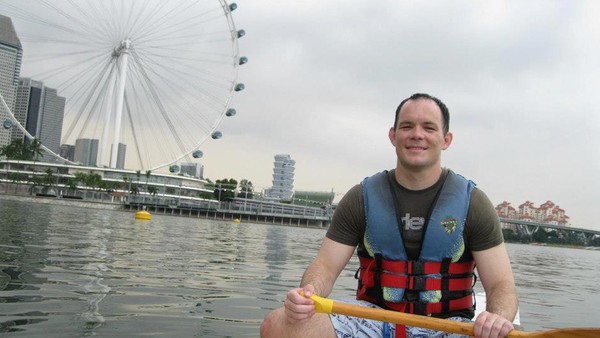
Shane Todd on a dragon boat in Singapore during an outing with friends and colleagues in 2011. This is one of a number of images featured on Shane’s Facebook page. The photographs of Shane Todd have been provided by the Todd family
Mary and Rick Todd were anxious about entering the apartment where their oldest son had lived and died. Late last June the couple had flown from Montana to Denver to Los Angeles to a colonial-era house in the Chinatown district of Singapore to try to make sense of an unthinkable loss: Shane Todd, a young engineer who had just wrapped up an 18-month stint with a government research institute known as IME, was dead – an apparent suicide, according to the Singapore police. Mrs Todd felt her heart pounding as she climbed the narrow staircase to his apartment and thought about what the police had told her a day earlier.
Shane had died a week before he was to return to the US. The police said he had drilled holes into his bathroom wall, bolted in a pulley, then slipped a black strap through the pulley and wrapped it around the toilet several times. He then tethered the strap to his neck and jumped from a chair. Shane, 6ft 1in and nearly 200lb, hanged himself from the bathroom door, the autopsy report said.
So the Todds, along with two of Shane’s younger brothers, John and Dylan, were unnerved by what they didn’t see as they crossed the threshold. The front door was unlocked and there was no sign of an investigation – no crime-scene tape, no smudges from fingerprint searches. “The first thing I did was make a beeline for the bathroom,” Mrs Todd recalled. She wanted to see exactly how Shane had died – and she saw nothing that fitted the police description. The marble bathroom walls had no holes in them. Nor were there any bolts or screws. The toilet was not where the police had said.
Beyond the bathroom, Shane’s home looked like a snapshot of a man in the middle of a move. There was laundry in the dryer and dirty washing on the floor. Clean clothes were folded on the couch. Boxes were packed. Shane, in his last hours, had been trying to sell his furniture. He had written out price tags. The Todds found Shane’s airline ticket on the dining table. His laptops and mobile phone were gone – taken and kept by the Singapore police.
As the Todds looked around the apartment, some of Shane’s friends and co-workers stopped by. The Todds were eager to meet them. No one could quite grasp Shane’s death: his girlfriend said he had been stressed about work, which his parents knew; but some work colleagues said Shane had been particularly upbeat on his last day at IME. A group had met at a steak restaurant and Shane said he had a job lined up in the States. One friend turned on a laptop to show the Todds a video of Shane at a karaoke bar. He was wearing Bermuda shorts and belting out “Susie Q”, “his go-to song”, his brother John said. “Everyone laughed so hard, because it was so Shane,” Mrs Todd said.
Before leaving, Mrs Todd noticed what looked like a small speaker. “Do you think the boys could use this?” she asked her husband. “Put it in the bag,” he said.
That last-minute find has altered the story of Shane Todd’s death. The card-sized plastic case was not a speaker but an external hard drive with a back-up of his computer files, including his work at IME, and a timetable and plan for a project that apparently involved IME and Huawei Technologies, the Chinese telecom giant.
The plan lays out how, from 2012 to the end of 2014, IME and Huawei would “co-develop” an amplifier device powered by gallium nitride (GaN), a semiconductor material able to withstand extreme heat and power levels well beyond silicon. GaN devices have commercial use in lighting as well as high-powered transistors for mobile phone base stations. They also have tremendous military potential, and major US defence contractors – including Northrup-Grumman and Raytheon – have pursued significant research and development in GaN for use in radar and satellite communications.
Security and technology experts consulted by the FT reviewed the project plan and all noted its civilian and potential military applications. Robert York, a professor of electrical and computer engineering at the University of California, Santa Barbara – a world leader in GaN research and where Shane earned a doctorate in silicon devices – said it would be “unnerving but not surprising” if Huawei were to be trying to advance its GaN technology. The high-powered amplifier has civilian use but “could be used for a number of military applications: high-powered radar, electronic warfare including signal jamming and even potentially some weapons”, Professor York added.
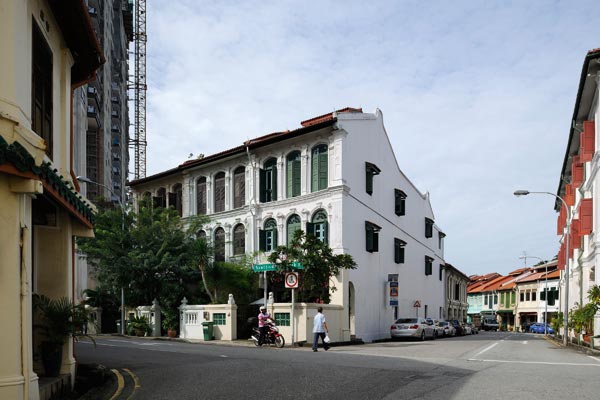
The colonial-era corner house in Singapore where Shane Todd lived on the first floor and where his body was found
Shane, it turns out, had deep misgivings about the project he was working on and feared he was compromising US national security. His family wants to know whether that project sent him to his grave.
. . .
Shane Todd was an all-American boy raised in a middle-class family who lived in California and Florida before settling in Montana. His dad was a US Navy pilot based in San Diego when Shane was born. His mother grew up in southern California and graduated from a Christian evangelical university there. Her husband, agnostic in his youth, said he “adopted Christ” early in their relationship.
Mr Todd left the Navy when Shane was three. He eventually became a commercial airline pilot. The Todds moved to Boca Raton, Florida, when Shane was 13 and the youngster – by then the oldest of four boys – acclimatised well. He was athletic – a successful wrestler – and won honours in science.
He went on to the University of Florida and developed a close group of friends. One roommate described him as “brilliant” and “highly competitive”; a rugby teammate called him a “tough son of a bitch. Not only physically … but mentally”. Shane excelled at his studies and loved a good party. “Wherever HE was, the PARTY was,” a friend wrote in a memorial. Shane also fell in love and began to question his religious upbringing. Mrs Todd said he disagreed with the idea that sex before marriage was wrong and broke from regular churchgoing.
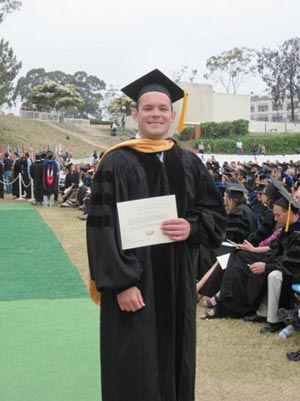 ©courtesy of the Todd family
©courtesy of the Todd familyShane at his PhD graduation in 2010 from the University of California, Santa Barbara
In 2002, Shane began having trouble sleeping. Mrs Todd said they found a psychiatrist who diagnosed Shane as working too hard, trying to do too much. Shane was prescribed an antidepressant. He took the medication for three months, his mother said, and then he felt better.
In 2003, Shane graduated with honours in electrical engineering and then worked on a master’s degree. He graduated from Florida in 2005 and headed to the University of California, Santa Barbara, for his doctorate. His adviser John Bowers said Shane did groundbreaking work on high-frequency, silicon-based transmission lines. “He was very smart, motivated, determined,” Bowers said.
Shane had several job offers after graduation in 2010. He told his parents that he chose to go to Singapore because he was looking for adventure.
. . .
The Institute of Microelectronics is Singapore’s high-profile high-tech calling card. The institute is a well-regarded division within the government’s Agency for Science, Technology and Advance Research, designed to foster “world-class scientific research”. In the fast-growing city-state studded with skyscrapers, IME sits amid tree-lined streets in an area near Singapore National University.
Shane joined IME in December 2010 and was soon promoted to direct a five-man team focused on GaN devices. Sometime in 2011, according to files found on Shane’s hard drive, he began to work on what was apparently a joint project between IME and Huawei to develop a GaN amplifier.
Shane created a folder in September that year that he labelled “Huawei”. Within that was a file entitled “Schedule 1 Huawei GaN Spec 01” and this contained a “Project Plan” that outlined objectives, scope and a timetable for the proposed collaboration between IME and Huawei.
Shane was tasked with finding equipment pivotal to GaN research. He determined that Veeco, a publicly traded company in New York, manufactured the equipment they needed. Shane left the warmth of Singapore for winter in the US and was trained at the Veeco offices from January 2 to 13, 2012.
Before Shane left Singapore, IME put together a “proposal” document in November 2011 about what was expected. Shane was to “visit the Veeco facility” to train with engineers on equipment used in GaN development. Equipment purchased from Veeco as well as the technology needed by IME were mentioned. “Veeco has also stated that they will not directly transfer the best known method recipes to our tool, rather we will copy the recipe first hand during our visit.” In a tender for the equipment, also found in Shane’s files, the GaN recipe is referenced: “Can share during training but not available for technology transfer.”
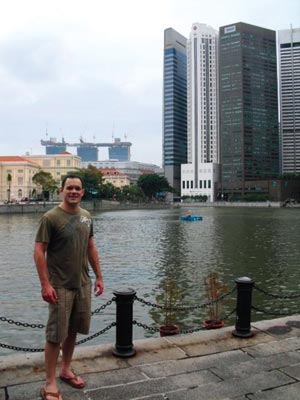 ©courtesy of the Todd family
©courtesy of the Todd familyRelaxing in Singapore, where he went to work for IME after graduating
The Veeco tool sought by IME is known, in the parlance of international safeguards, as “dual-use”. It can be used in commercial and in military applications. To sell this to IME, Veeco needed an export licence from the US Commerce Department, company spokeswoman Debra Wasser confirmed. Veeco would not release a copy of the licence – and the document is not a public record – but Shane had retained a file labelled “Export License – IME – Completed” on his hard drive.
In that file, IME states that the “end use will be developing recipes for growing [gallium nitride on silicon] for power electronic devices that support industrial partners in Singapore”. On the same form, IME defines the nature of the research as “commercial applications”.
Veeco declined to answer questions about its dealings with IME. “We do not have permission from IME to disclose anything,” said Wasser, vice-president for investor relations and corporate communications. In an email, she likened Veeco’s equipment to an oven used to bake a cake; the customer buys the oven and decides the recipe for its technology. Veeco provides “basic process recipes in training, not the cutting-edge recipes that our customers develop for their specific needs”, she said. The customers’ technology determines the ultimate end use, she added.
As for the IME proposal that it would be possible to “copy the recipe first hand” during the training at Veeco, Wasser said the “author of the document was confused”. “Veeco does not itself have ‘best known recipes’” for the machinery purchased by IME, she said. Customers who visit the site are not given access to any “unique recipes or formulas”, she added.
Wasser pointed out, in response to questions about Huawei, that Veeco’s equipment is already used by qualified customers in China; GaN technology is found in many consumer devices. “Veeco strives to maintain absolute compliance with all US export controls,” she said.
The situation is complicated. Any potential connection with Huawei would be problematic for Veeco and for IME because Huawei has been deemed a security risk by powerful US lawmakers. The House of Representatives intelligence committee last year warned, after an 11-month investigation, that it suspected communications equipment made by Huawei could be used for spying. It recommended the US government not use components made by Huawei, or its rival ZTE, because neither could be “trusted to be free of foreign state influence”. Huawei, in turn, denied the suspicions and decried “China bashing”. Other western countries are not so sure. Australia has banned Huawei from participating in its national broadband network. In the UK, the Intelligence and Security Committee has just finished a review of “the whole presence of Huawei” in the national infrastructure and a report is expected shortly.
Regarding the case involving Shane Todd, Huawei’s representatives declined to answer detailed questions from the FT about any project with IME or Shane Todd. In December, Scott Sykes, Huawei’s vice-president and head of international media, said: “We are not aware of any of this.” In recent weeks, Sykes responded to additional questions with the comment: “We have not had any co-operation with IME with respect to GaN so there is nothing more to add.”
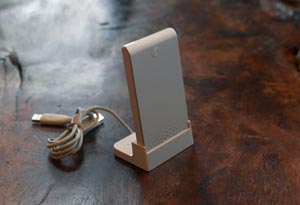 ©Ian van Coller
©Ian van CollerThe hard drive retrieved by the Todds from their son’s apartment in Singapore, containing a backup of his files from IME
Professor Sir Colin Humphreys is the director of research at the Cambridge University Centre for Gallium Nitride, one of the most renowned in the world for the cutting-edge technology. In October he was invited to Singapore to review some of IME’s GaN efforts and noted that IME “had a good team”.
Sir Colin reviewed the “Huawei” project on Shane’s hard drive for the FT and said it was a plan for a GaN-based high-electron mobility transistor – an amplifier with commercial and military applications. He said: “You can’t say it is 100 per cent for military use. There are many civilian uses.” He added: “You would be foolish not to think of military uses because there is a huge market for it.”
Sir Colin pointed out, however, that the Chinese government has a substantial interest in commercial use of GaN. China has subsidised the purchase of GaN-growth systems – from Veeco and other companies – for the production of LEDs, part of an effort to reduce China’s electricity usage, he said.
The IME trip proposal was also reviewed by Sir Colin and he told the FT that he found some of the phrasing “unusual” with regard to the suggestion that Veeco might be willing to share a technology recipe. “Normally you’d expect the recipe to be put on the machine. What the proposal says is: they won’t put it on the equipment but they will make it available.” It could then be stored on a USB or other portable drives.
Steven Huettner, who has worked on defence projects for more than 30 years in the US, much of that at Raytheon Missile Systems, also reviewed the “Huawei” project plan, and described it as “disturbing”. The project could be aimed at producing high-powered transmitters for mobile phone towers, he acknowledged, but the specifications “jump out at you”. The project “absolutely has military potential”. Huettner said, in his opinion, “an obvious use would be for high-powered radar that could enhance … military capability”.
. . .
Within weeks of returning from Veeco, Shane Todd seemed increasingly stressed. Until then, Shane “was a typical Californian. He loved life,” said one friend. But in February 2012, friends and Shane’s parents heard that he was uneasy about a work project. In his long, weekly calls through Skype to his parents, Shane said he was collaborating with a Chinese company at IME and felt that representatives asked technical questions and then spoke in Mandarin to exclude him. “I am being asked to do things with a Chinese company that make me uncomfortable,” Mrs Todd recalled him saying. “He said he felt he was being asked to compromise American security.”
Among her sons, Shane was the most private, Mrs Todd said, so she tried not to pry. But Shane complained frequently about IME, sometimes adding that he was stressed about the Chinese project. “Mom, I’m going to call you every week, and if you don’t hear from me for a week, call the American embassy,” Mrs Todd recalled him as saying. She worried that Shane was depressed – much as he had been during university – and she offered to fly to Singapore. He responded: “Mom, I’m not depressed. I’m anxious.” He said she needn’t come, she recalled.
Several times, he told his parents that he felt he was under threat because of his work with the Chinese. Mr Todd tried to talk Shane into coming home. Shane said no, he had an obligation to IME. “I remember, vividly, him saying to me, ‘I am so naive,’” Mr Todd said. “He thought he had been trained for one purpose that was above board. Then he realised he was being asked to do stuff that could harm his country’s national security.”
Mrs Todd said she didn’t ask specifics about Shane’s work. She didn’t even know the name of the Chinese company until after his death. But the stress made him come back to God, she said. “Mom, can we pray?” Shane asked in April. “If I survive this, Father, I want to live my life to serve you.”
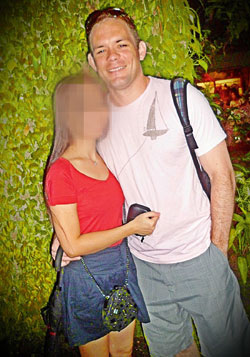 ©courtesy of the Todd family
©courtesy of the Todd familyShane with his girlfriend on an outing to Singapore Zoo in May 2012
Shane’s girlfriend, Shirley Sarmiento, said Shane began attending church that spring because of the stress. “He said there were things he had done that could get him in trouble with the US government,” Shirley said over a coffee. He said it had “something to do with defence” and involved a Chinese company and that it left him “uncomfortable”.
Still, Shirley said Shane was coping. “I’m a nurse,” she said. “I should know if somebody is suicidal.”
In late February, Shane told his parents and his girlfriend that he was quitting IME and had given 60 days’ notice. He then agreed to stay another 30 days because he was the only person trained on the Veeco equipment, his parents said.
In early April, Shane consulted Singapore psychiatrist Nelson Lee. According to a report Dr Lee wrote for the police, which was given to the Todds, Shane was referred by his doctor who noted an “increase in work stress with progressive difficulty coping”. Shane told Dr Lee that he had suffered depression years previously but that this time he was suffering more from anxiety. He told the doctor that he had experienced a loss of appetite and concentration and his sleep was disturbed. Dr Lee wrote that Shane’s “mood was generally low” and he was tearful at times. He also noted that Shane was neatly dressed, coherent and had good eye contact. He added that Shane “did not feel that life had no meaning nor were there any suicidal ideations expressed”. The psychiatrist prescribed an antidepressant. He suggested Shane come back in three weeks, which he did not do.
Shane’s time in Singapore wound down unremarkably except for some late-breaking good news. A few days before his death, Shane was offered a job by Nuvotronics, a US research firm that works with the US defence department and Nasa. David Sherrer, the company president, said Shane stood out among a dozen applicants and was offered a $105,000 pay package.
Shane was busy in his final week at IME. On Wednesday, he sent an email, inviting colleagues to “an American-style last lunch for this American guy”. He also sent an email to his mother, saying he would call soon. On Thursday he had lunch with a colleague who remembered he took three phone calls that seemed to upset him. Shane also emailed Nuvotronics with queries – could he publish research papers and file for patents, and how much holiday leave would he receive?
On Friday Shane and about three-dozen colleagues had lunch. At 5.16pm, he signed off with this email: “Thanks for helping make my time at IME a memorable experience. I wish you all the best of luck in the future. Please keep in touch.”
Shirley Sarmiento expected to hear from Shane on Friday and Saturday. When he didn’t answer her texts on Sunday, she went to his apartment. She found the door unlocked and walked into a room dark but for a light under his bedroom door.
Shirley opened the door and “got the shock of my life”. Shane was hanging from an adjoining bathroom door. His face was white, his arms dangling. He was wearing a grey T-shirt and black shorts. She pushed the body; it didn’t move. A chair, upright, stood about 5ft away. Shirley screamed and a neighbour came to her aid. The police were called and Shirley recovered enough to type a message into Shane’s Facebook page to alert his family: “This is Shane’s girlfriend. Please give me your number. I really need to call you.”
Mrs Todd awoke to see the message at 7.30 Sunday morning, at her home in Montana. “I knew instantly something was wrong,” she said. When Shirley rang, Mrs Todd heard her screaming something about a hanging. “I kept trying to figure out what the heck she was talking about,” Mrs Todd said. Then she understood. “My beloved firstborn son was dead. How could this be?”
. . .
Forty-eight sleepless hours later, the Todds walked into the Singapore police headquarters. They were met by a consular officer from the US embassy. Mr Todd asked if they should tell the police about Shane’s work, his fears for his personal safety and concerns that he had compromised US national security. The embassy officer advised the Todds to tell the police everything.
US officials would not discuss the Todd case with the FT. Instead, the embassy issued a short statement that offered “heartfelt sympathy” and referred all questions to the Singapore police. The latter did not respond to repeated questions from the FT. What follows is the Todds’ recollection of meetings with embassy and police officials. All emails referred to in this story were provided by the Todds.
 ©Ian van Coller
©Ian van CollerMary and Rick Todd, at their home in Marion, Montana, with Shane’s brothers (from left), Chet, Dylan and John
The Todds and the consular officer were ushered into an office where they met Detective Muhammad Khaldun. He read aloud a police description of how Shane had hanged himself then handed over two printouts of suicide notes, which the detective said were found on Shane’s computer. One was addressed “Dear everyone”, another “Dear Mom and Dad”, and there were three brief ones to his girlfriend, his brothers, and “friends”. The police told the Todds that they had Shane’s computer, mobile phone and appointment book, all found in the apartment.
Mrs Todd read the notes and handed them back to the detective. “My son might have killed himself, but he did not write this,” she said with some calm.
The notes were surprising, she said later. One praised IME and its management. Another apologised for being a burden to his family. Neither sounded like Shane. One, Shane had never been a burden – “he had excelled at everything he put his mind to,” Mrs Todd said. Two, “he hated the way IME was run and the way top management treated people.” Shane’s girlfriend later said she was sure Shane’s last moments were not spent lauding IME. “He hated his job,” she said.
IME’s director, Dim-Lee Kwong, is an American who was recently awarded Singapore’s highest honour for contributions to the country’s research and development. Kwong declined to be interviewed about Shane Todd but sent this statement: “As the matter pertaining to Shane’s demise is still under police investigation, IME is unable to comment on the queries that you have raised.”
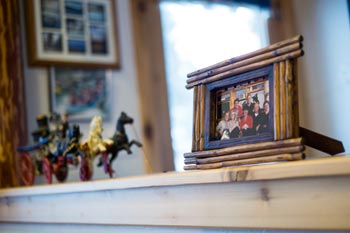 ©Ian van Coller
©Ian van CollerA family photo including Shane (top right) on the mantelpiece
Before the Todds buried Shane in Pomona, California, where his grandfather and grandparents are buried, they looked hard at his body – at a small bump on his forehead, bruises on his hands, and the trauma around his neck. They read the official autopsy report supplied by the Singapore police. No drugs or alcohol in Shane’s blood. Cause of death: “Asphyxia due to hanging”. Still, the Todds simply couldn’t believe that Shane took his own life.
The Todds therefore asked the mortuary to photograph Shane’s body, in the coffin, and they sent those snapshots to a pathologist recommended by a family member. Dr Edward H. Adelstein, chief of pathology at the Harry S. Truman Veterans Hospital in Missouri, examined the photos and autopsy report and wrote a review that stoked the Todds’ suspicions. Adelstein said Shane’s deeply bruised knuckles and hands should have been listed in the original autopsy. He also said the neck wounds did not look like injuries from a suicide but indicated a rapid death. He suggested a scenario far different to that outlined by the Singapore authorities: Shane fought an attacker and died by a garrotting.
The Todds sent the assessment to Detective Khaldun, who consulted the Singapore pathologist. The latter sent back a detailed dismissal of Adelstein’s review. The hands bore evidence of post-mortem pooling of blood, he wrote. Dr Adelstein had not seen the body and he did not know the difference between “findings of hanging as opposed to … garrotting”.
The Todds were left unconvinced. Then Shane’s father made an unexpected discovery. Two weeks after Shane’s funeral, he looked at the small “speaker” taken from Shane’s home and realised it was an external hard drive. He sent it to a computer analyst recommended by Mrs Todd’s brother. Ashraf Massoud works at Datachasers, a data recovery firm in Riverside, California, and he made several discoveries, which he explained to the FT.
Massoud said he could determine that on June 22 – Shane’s last day at IME – thousands of work files were transferred to the hard drive between 11am and 5.09pm. It was reasonable to think that Shane was creating a back-up from his computer, he said.
Hours later, in the middle of the night, someone went into Shane’s hard drive and accessed five folders, all labelled IME. That happened quickly, between 3.40am and 3.42am on Saturday, June 23. Since the time of Shane’s death is uncertain, Massoud could not say who looked at the IME files.
But Massoud found activity, again, on several more IME files on the night of June 27, three days after Shane’s body was found. He said someone looked at IME folders – including one labelled “Supervisor” and one labelled “Goal Setting” – between 8.38pm and 8.40pm that Wednesday. One file in particular was opened and closed but closed improperly so that a “shadow” file was created. That shadow file was then deleted by the same person. Massoud located the original file on the drive – it was a PowerPoint presentation of the “Layer structure and summary of Veeco grown HEMT wafer”. This contains the scientific formula – a specific recipe – for enhancing a GaN chip.
Massoud said his forensic findings “cannot be 100 per cent conclusive” without reviewing Shane’s computer – which the police retain. But he told the FT: “In that two-minute window, someone is perusing. Something is happening. And it’s not automated, it’s a person.”
. . .
The Todds had been sending emails to the Singapore police and the US embassy for months. Both police and embassy officials responded that the investigation was ongoing and embassy officials made clear that there had been “no determination as to whether the death of your son was a suicide or homicide”. Still, the Todds felt the police were not fully considering foul play. So, in December, the Todds flew to Singapore to make the case that their son was murdered. What follows is their version of events. Embassy officials, police and IME would not discuss the Todds’ visit with the FT.
The Todds first met embassy consul Craig Bryant, and raised their suspicions about police handling of the case. “Are you saying the Singapore police are corrupt?” Bryant asked. “That’s a serious charge.”
“Well, my son’s death is serious,” Mrs Todd replied, surprised by his tone. Mr Todd said he wasn’t accusing the police of corruption; he was accusing them of mishandling the investigation.
Two days later, the Todds had a one-and-a-half-hour meeting with US ambassador David Adelman – at one point, Mr Todd broke down in tears. Adelman, a lawyer, said he had trouble believing the police were at fault but expressed surprise when told that they had not searched for fingerprints nor taken photographs of Shane’s apartment that night.
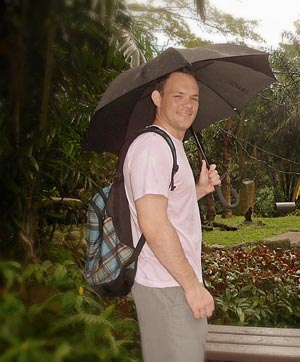 ©courtesy of the Todd family
©courtesy of the Todd familyShane at Singapore Zoo in May 2012
The ambassador offered some information that, in turn, surprised the Todds. He said the FBI in Singapore had pushed hard to investigate. He said the FBI offered its assistance, notably in forensics, twice but the Singapore police refused it. The FBI in Washington confirmed that the agency had tried to help. “The United States has offered FBI assistance to the Government of Singapore on the Shane Todd case and has engaged in frequent discussions with the Government of Singapore regarding Shane’s death,” read a statement sent to the FT.
An FBI spokesperson in Washington, who declined to be identified, added that the bureau cannot investigate in another country without a request from that government. “The FBI continues to follow the case of Shane Todd closely,” the spokesperson said in an email. The State Department confirmed that the Todds met with the ambassador but declined to elaborate.
The Todds’ last meeting was at the IME headquarters, and they laid out what happened in an interview with the FT immediately after. No one else involved would comment. The Todds said IME deputy director Guo-Qiang Lo was present. So was Detective Kahldun. Another police officer was there plus a lawyer, a public relations representative and a human resources liaison from IME.
“We think our son was murdered,” Mr Todd began. No one responded. He then read prepared questions from his laptop and typed in the answers.
“When did Shane first meet with Huawei?” Mr Todd asked. “When was his last meeting? Do you know the names of the attendees?”
“I can’t comment at this time,” the institute’s lawyer said. “Because of the police investigation.”
“Have the FBI contacted you about the transfer of sensitive technology to China?” “I have no information,” the lawyer said.
“Did anybody from IME forbid employees to talk about Shane?” Mr Todd asked. “You can’t police these things,” the lawyer said.
The meeting was over. The IME lawyer made a final comment that stunned the Todds. “You are not to contact IME again,” Mrs Todd recalls the lawyer saying. “There will be no further contact, no more meetings, no more emails.”
. . .
IME won’t answer questions about Shane Todd. IME has been vigilant, though, about keeping tabs on the story. A request from the FT to interview director Dim-Lee Kwong was refused in December. At the same time, IME sent an email to employees stating that an FT reporter might contact them, and that they were forbidden to talk to the media. (A recipient sent a copy to the FT.) The next day, Dr Kwong called some of Shane’s co-workers into his office and said, again, that they were not to speak to reporters, according to one employee at the meeting.
Despite the warnings, an IME employee contacted Shane’s parents. That person wrote that Shane’s death was “a tragedy” and hard to figure out. “After collecting all information available, I cannot believe it is a suicide case. Actually, no one believes it.” The person ended, saying: “I truly hope that [the] FBI can be involved and perform further investigation.”
The Todds received an email from Detective Khaldun in January. He told them that a coroner’s inquest into Shane’s death would be held in March and asked if they wanted to provide any witnesses. He also asked them for the names of Shane’s neighbours – seven months after his death, police wanted to interview them – and he requested a piece of evidence. He wanted them to hand over the hard drive they had found.
The Todds wrote back with the names of neighbours they knew. But they believe the loss of their son has national security implications and want it treated as such by Singapore and US authorities. They see Shane’s death as a warning to others – young, smart and ambitious – working in the global marketplace of commercial and defence research.
The Todds agree that Shane’s hard drive may be a critical piece of evidence in how he died and could shed fresh light on the vulnerabilities of technology safeguards. But they question how the Singapore police have so far investigated Shane’s death, so they won’t hand over the drive. They are offering, instead, to send a copy of the contents of the drive. In return, they want the Singapore police to send them a copy of all files on Shane’s laptops, which are still in police custody. And again, they are asking the Singapore authorities to invite the FBI to help investigate how their son died.
Raymond Bonner, a former correspondent for The New York Times, is the author of ‘Anatomy of Injustice’; Christine Spolar is FT Investigations Editor. Additional research by FT reporter Sally Gainsbury.
The photographs of Shane Todd published here have been provided by the Todd family.
Copyright The Financial Times Limited 2013. You may share using our article tools.
Please don't cut articles from FT.com and redistribute by email or post to the web.